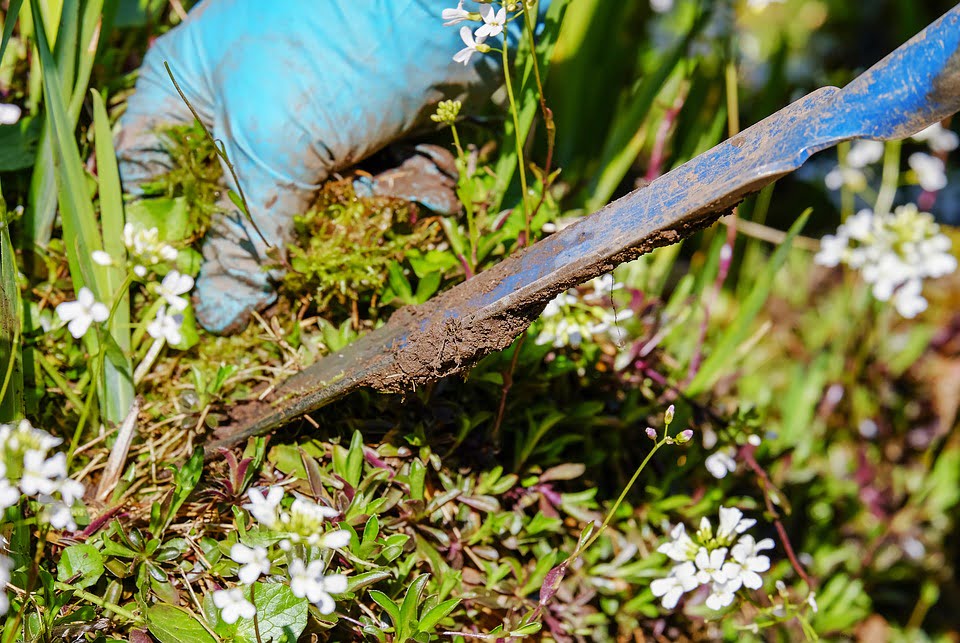Are you tired of dealing with a green and slimy water fountain? Keeping your water fountain clean and clear can be a challenge, but with a few simple steps, you can enjoy a beautiful and safe fountain all year round.
In this article, we will show you how to prevent your water fountain from turning green and ensure the safety of your loved ones.
Regular cleaning and maintenance are essential to keep your water fountain in top shape. By using algaecide or fountain cleaners, you can effectively eliminate algae and bacteria that cause the water to turn green. Installing a fountain cover or shade will help protect your fountain from sunlight, which promotes algae growth. Proper positioning of your fountain is also crucial to prevent debris accumulation.
Balancing the chemical levels in the water is another key factor in maintaining a clean fountain. Consider adding a fountain filter or UV sterilizer to further enhance water clarity. Natural remedies like vinegar or hydrogen peroxide can also be used to control algae growth. Lastly, keeping the surrounding area clean and free from debris will prevent contaminants from entering the water.
Follow these tips and enjoy a crystal-clear and safe water fountain that you can be proud of.
Quick Summary
- Regular cleaning and maintenance are essential to prevent a water fountain from turning green
- Use algaecide or fountain cleaners to eliminate algae and bacteria
- Install a fountain cover or shade to protect from sunlight and debris
- Consider adding a fountain filter or UV sterilizer for water clarity and debris removal
Regularly Clean and Maintain Your Fountain
You should make sure to regularly clean and maintain your fountain if you want to keep it looking pristine and prevent any unsightly green growth. Water fountain maintenance is essential for preventing algae growth and ensuring a safe environment for you and your family.
To start, it’s crucial to clean the fountain at least once a week. Begin by turning off the fountain and unplugging it from the power source. Carefully remove any decorative items, such as rocks or plants, and set them aside.
Next, drain all the water from the fountain and scrub the surfaces with a soft brush or sponge. Use a mild detergent or a solution of water and vinegar to remove any stubborn stains or algae buildup. Rinse thoroughly with clean water and refill the fountain.
In addition to regular cleaning, it’s important to perform routine maintenance tasks. Check the water levels daily and top up as needed to ensure proper functioning. Inspect the pump and filter regularly to ensure they’re clean and functioning correctly. If you notice any issues or unusual noises, consult the manufacturer’s instructions or seek professional help.
By following these simple water fountain maintenance steps, you can prevent algae growth and keep your fountain looking beautiful and safe for everyone to enjoy.
Use Algaecide or Fountain Cleaners
To prevent the growth of algae and maintain a pristine appearance, try using algaecide or fountain cleaners.
When it comes to keeping your water fountain clean, you have two options: chemical or natural solutions. Algaecide is a chemical solution specifically designed to kill and prevent the growth of algae. It’s highly effective and can quickly eliminate any existing algae in your fountain. Using algaecide as a preventive measure is also beneficial, as it creates a barrier that prevents algae from returning.
One of the main benefits of using algaecide is its efficiency. It works fast and effectively, ensuring that your fountain remains algae-free. Additionally, algaecide is easy to use. Just follow the instructions provided by the manufacturer and apply the recommended amount to your fountain. It’s important to note that while algaecide is safe for use in fountains, it should be handled with care and kept out of reach of children and pets.
If you prefer a more natural approach, there are also fountain cleaners available that use natural ingredients to control algae growth. These cleaners are environmentally friendly and safe for plants and wildlife. However, natural solutions may not be as powerful as algaecide, so regular maintenance and cleaning may be required to prevent algae from taking over your fountain.
Using algaecide or fountain cleaners is an effective way to prevent the growth of algae and maintain a clean and beautiful water fountain. Choose the option that suits your preferences and enjoy a hassle-free fountain experience.
Install a Fountain Cover or Shade
Protect your beloved fountain with a stylish cover or shade to shield it from the elements and maintain its pristine beauty. Not only will a fountain cover or shade add an extra layer of protection, but it’ll also help prevent algae growth and reduce the need for constant maintenance. Here are some reasons why installing a fountain cover or shade is crucial for fountain maintenance and preventing algae growth:
- Protection from direct sunlight: Installing a cover or shade blocks the sunlight, creating a shaded environment that discourages algae growth.
- Reducing debris accumulation: A cover or shade acts as a barrier, preventing leaves, twigs, and other debris from entering the water and reducing the chances of algae formation.
- Preventing water evaporation: A cover or shade helps minimize evaporation, ensuring the water level remains stable and reducing the risk of algae growth.
- Enhanced safety: A cover or shade not only protects your fountain from algae but also keeps it safe from falling objects or potential accidents. It acts as a physical barrier, preventing unwanted access and ensuring the safety of children and pets.
By installing a fountain cover or shade, you can maintain the beauty of your fountain while reducing the risk of algae growth and the need for constant maintenance. It’s a simple yet effective way to keep your fountain clean and safe.
Position Your Fountain Properly
Position your fountain in the right spot to maximize its beauty and create a tranquil atmosphere in your outdoor space. Choosing the right location for your water fountain is crucial for proper water flow and to prevent it from turning green. Here are some tips to help you position your fountain properly.
First, consider the proximity to trees and other plants. While the shade from trees can be beneficial in preventing algae growth, falling leaves and debris can clog the fountain and disrupt the water flow. It’s best to keep your fountain at least a few feet away from any overhanging branches or shrubs.
Next, think about the terrain. Ensure that the fountain is placed on a level and stable surface. Uneven ground can cause the water to overflow or create imbalance, which can lead to accidents. Additionally, avoid placing the fountain in a low-lying area that collects water during heavy rain, as this can cause the fountain to flood.
To help you visualize these tips, refer to the table below:
| Location Tips | |
|---|---|
| Proximity to trees | Keep a distance |
| Terrain | Level surface |
| Drainage | Avoid low areas |
By following these guidelines, you can maintain proper water flow and prevent your water fountain from turning green, ensuring a safe and beautiful outdoor space.
Balance the Chemical Levels in the Water
Achieve a crystal-clear and inviting outdoor oasis by ensuring the chemical levels in your water are properly balanced. Maintaining the water in your fountain is crucial to prevent the growth of algae and keep it from turning green.
To maintain water clarity, it’s important to regularly test and adjust the chemical levels in your fountain. Start by testing the pH levels of the water using a water testing kit. The ideal pH range for a fountain is between 7.2 and 7.8. If the pH is too high, add a pH reducer to bring it down to the desired range. Conversely, if the pH is too low, use a pH increaser to raise it.
Next, check the chlorine or sanitizer levels in the water. Chlorine helps prevent the growth of algae and other harmful bacteria. Use chlorine tablets or a liquid sanitizer to maintain the recommended levels. Be sure to follow the manufacturer’s instructions and handle the chemicals with care.
In addition to pH and chlorine levels, it’s important to regularly clean and remove debris from your fountain. This will help prevent organic matter from decaying and causing the water to turn green. Use a brush or a fountain cleaner to scrub away any algae or buildup on the surface of the fountain.
By regularly testing and adjusting the chemical levels, as well as maintaining a clean fountain, you can enjoy a beautiful and algae-free water feature in your outdoor oasis.
Consider Adding a Fountain Filter or UV Sterilizer
Enhance your outdoor oasis by considering the addition of a fountain filter or UV sterilizer to maintain a pristine and inviting water feature.
When it comes to fountain maintenance, these devices can be lifesavers. A fountain filter works by removing debris, such as leaves, twigs, and insects, from the water, preventing them from clogging the pump or causing water discoloration. This not only keeps your fountain looking clean but also helps to extend the lifespan of the pump.
In addition to debris removal, a fountain filter also helps to balance the chemical levels in the water. It effectively removes excess minerals and other impurities that can contribute to the growth of algae and bacteria. By maintaining proper chemical levels, you can prevent your water fountain from turning green and ensure a safe environment for both your family and pets.
Another option to consider is a UV sterilizer. This device uses ultraviolet light to kill bacteria, viruses, and other microorganisms in the water. It’s a safe and chemical-free method of water disinfection, providing an added layer of protection against harmful pathogens.
By investing in a fountain filter or UV sterilizer, you can enjoy the benefits of a clean and healthy water feature. Not only will it save you time and effort in fountain maintenance, but it will also create a beautiful and inviting outdoor space for you and your loved ones to enjoy.
Use Natural Remedies, such as Vinegar or Hydrogen Peroxide
To maintain a pristine water feature, try using natural remedies like vinegar or hydrogen peroxide to keep the water clean and free from algae and bacteria. These natural remedies aren’t just effective but also safer than chemical alternatives. Here are three reasons why you should consider using natural remedies for your water fountain:
-
Non-toxic: Vinegar and hydrogen peroxide are natural substances that are safe for humans, pets, and the environment. They won’t harm the plants or wildlife around your fountain.
-
Environmentally friendly: Chemical treatments can have a negative impact on the environment, especially if they end up in rivers or lakes. By using natural remedies, you’re reducing your ecological footprint and contributing to a healthier ecosystem.
-
Cost-effective: Natural remedies like vinegar and hydrogen peroxide are readily available and affordable compared to chemical treatments. You can easily find these products at your local grocery store or online.
In addition to these benefits, maintaining a clean water fountain has its advantages. A clean fountain not only looks more appealing but also promotes a healthier environment. Algae and bacteria can cause unpleasant odors and potentially harm your health. So, by using natural remedies to keep your water fountain clean, you ensure a safe and enjoyable experience for yourself and others.
Keep the Surrounding Area Clean and Free from Debris
Now that you know how natural remedies like vinegar or hydrogen peroxide can help keep your water fountain from turning green, let’s talk about another important aspect: keeping the surrounding area clean and free from debris. This is crucial in maintaining a safe and healthy environment for both you and your water feature.
Regularly cleaning the area around your fountain is essential to prevent the growth of algae and other unwanted organisms. Start by removing any leaves, twigs, or other debris that may have fallen into the water or accumulated around the fountain. This can be done using a net or a small handheld rake.
Next, use a mild detergent or a specially formulated fountain cleaner to clean the fountain basin and any visible surfaces. Be sure to follow the manufacturer’s instructions when using any cleaning products. Rinse thoroughly with clean water to remove any residue.
In addition to regular cleaning, consider taking preventive measures to keep the surrounding area clean. For example, placing a mesh or screen cover over the fountain can prevent leaves and debris from falling in. You can also trim any nearby plants or trees to minimize the amount of organic matter that can end up in the water.
By incorporating these cleaning techniques and preventive measures, you can ensure that your water fountain remains clean and free from green algae, creating a safe and enjoyable experience for everyone.
Frequently Asked Questions
Can I use regular household cleaning products to clean my water fountain?
Yes, you can use regular household cleaning products, but it’s safer to use vinegar as a natural cleaner for water fountains. It’s also beneficial to use specialized fountain cleaning products for better results.
How often should I clean and maintain my water fountain?
To prevent algae growth in your water fountain, clean and maintain it regularly. Algae thrives in stagnant water, so ensure proper circulation and filtration. Keep the fountain in a shaded area to minimize sunlight exposure, which promotes algae growth.
Will using algaecide harm the plants or fish in my water fountain?
Using algaecide in water fountains can help prevent green algae growth, but it’s important to consider the pros and cons. Some algaecides may harm plants or fish, so choose a safe option and follow the instructions carefully.
What is the best position to place my water fountain for optimal performance?
For optimal performance, place your water fountain in the best location with ideal placement. Consider factors like sunlight exposure, proximity to power source, and stability. This ensures both safety and enjoyment of your fountain.
How do I know if the chemical levels in my water fountain are balanced?
To ensure balanced chemical levels in your water fountain, regularly test the water using a water testing kit. This is important for water fountain maintenance and ensures the safety of both you and your fountain.
Conclusion
So there you have it! By following these tips, you can easily keep your water fountain from turning green.
Remember to regularly clean and maintain your fountain, use algaecide or fountain cleaners, and consider adding a fountain filter or UV sterilizer.
Position your fountain properly, balance the chemical levels in the water, and keep the surrounding area clean.
And don’t forget to try natural remedies like vinegar or hydrogen peroxide.
With these steps, your fountain will stay clean and beautiful.








